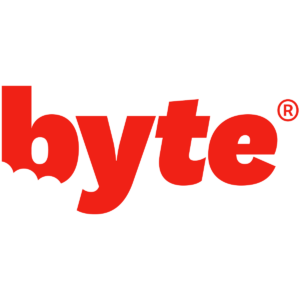How much do lingual braces cost, and are they truly the best solution as compared to invisible brackets and traditional braces? With brackets attached to the back of teeth, lingual braces use wires to move teeth into position, costing more due to additional time, materials, and expertise needed.
Braces are a common orthodontic treatment that can help correct a variety of dental problems. They function similarly to regular braces, with the exception that the brackets and wires are linked to the rear of the teeth, making them almost undetectable.
The goal of this article is to provide a thorough overview of lingual braces, including its advantages, expenses, and upkeep, so that you become well equipped to make an educated choice about your own dental care and whether or not lingual braces might be for you. By the time you have read this article all the way through to the end, you will know exactly what lingual braces are, how they function, and what to anticipate in terms of price and aftercare.
Types of lingual braces
There are many different types of lingual braces out there, all with a different cost range and a different technique. These are just a few of the several lingual braces that are currently offered to patients:
Incognito Braces
For optimal comfort and efficacy, Incognito braces are lingual braces that are built specifically to fit the shape of a patient’s teeth. They are a preferred option for adult patients because of their great level of confidentiality.
Harmony Braces
These lingual braces use computer-aided design to produce a precise and unique treatment strategy. This contributes to the patient’s efficient and successful outcome.
I-Braces
I-Braces are a more recent style of lingual braces that use lighter materials and a simple design to offer better comfort and quicker treatment timeframes. They are renowned for their adaptability and usability.
The ideal choice for a patient’s particular requirements and objectives can be determined by their orthodontist. Each variety has its own own advantages and qualities.
Benefits of opting for lingual braces
The advantages of options for lingual braces include:
Discreet
The appearance of lingual braces is one of their main advantages. Adults who are self-conscious about their appearance frequently choose lingual braces because they are nearly undetectable when the patient smiles or speaks, unlike conventional metal braces.
Custom fit
Many lingual braces, including Incognito braces, are built specifically for each patient, resulting in a secure fit and optimal efficacy.
Better oral hygiene
Lingual braces are fastened to the back of the teeth, so brushing and flossing are not hindered. This makes it simpler for patients to practise proper oral hygiene.
Stellar teeth straightening results
Lingual braces have been proven to be very successful in treating a range of dental issues, including overcrowded or misaligned teeth, overbites, and underbites. They function by gradually shifting the teeth into their right place by softly providing pressure to the teeth.
What influences how much lingual braces cost
The price of lingual braces can vary depending on a number of variables, such as:
- Type of Braces: The price of various lingual braces, such Incognito or Harmony, may vary.
- Location: The cost of orthodontic care can vary by region, with urban areas often costing more than rural ones.
- Experience of the orthodontist: The cost of treatment can also be influenced by the reputation and experience of the orthodontist.
- B. Typical Price: Depending on the criteria listed above, the average price of lingual braces might range from $8,000 to $10,000 or more.
- C. Insurance Coverage: Lingual braces are generally covered in full by many dental insurance plans. It is crucial to confirm the details of your coverage with your insurance company.
- D. Payment Options: To make treatment more accessible, many orthodontic offices provide payment plans or financing options. Additionally, patients might be able to use a flexible spending account (FSA) or a health savings account (HSA) to cover some of their medical expenses.
The price of lingual braces can vary considerably, and an orthodontist can provide a patient a more precise estimate depending on their unique needs and treatment plan.
Lingual Braces Alternatives
There are now a variety of brands of clear aligners that offer a cheaper alternative to lingual braces with all the benefits of Invisalign and other clear aligners.
Lingual Braces vs Invisalign
Lingual braces vs Invisalign – is one option decidedly better than the other?
Both lingual braces and Invisalign are alternatives to traditional metal braces which most people find unsightly.
Invisalign aligners are created using a series of thin plastic trays that fit over the teeth. This removes the need for metal wires entirely and means that Invisalign braces are all but visible. The brackets are also removable, which makes it easy to maintain your oral hygiene during the teeth straightening process.
Lingual braces, on the other hand, can be used as an alternative to traditional metal braces because they attach from behind, which means no one will see them during treatment and there is less risk for damage to tooth enamel caused by food getting stuck in between the wires of the brace.
In terms of convenience, Invisalign clear aligners can be removed but lingual braces cannot be removed during treatment.
If we look at the cost and timeline, lingual Braces start around $5000 per arch with X-rays, impressions taken, and lab work included (can range anywhere from $3500-$8000).
Invisalign typically costs around $1500 per arch (ranging from $1200-$1800) but can be as expensive as lingual braces depending on the severity of your condition.
Some people opt for Invisalign in order to save money because you have a higher chance of finishing treatment within 18 months with half the cost of lingual braces – however this is not always true! It’s important to speak with an orthodontist about what will work best for your needs before committing to any teeth straightening treatment plan.
Lingual braces vs traditional metal braces
Traditional braces are still an available option for anyone wanting to straighten their teeth, but because of more discreet alternatives like lingual braces and clear aligners, fewer and fewer people are going the traditional metal braces route.
While both lingual braces and conventional metal braces have the same goal of straightening teeth, there are some significant differences between them. Their positioning on the teeth is one of the primary distinctions between the two. While typical metal braces are affixed to the front of the teeth and are more noticeable when smiling, lingual braces are attached to the rear of the teeth and are therefore undetectable when smiling.
The process of customising is another notable difference. While standard metal braces are prefabricated and may need revisions to obtain a satisfactory fit, lingual braces are manufactured specifically for each patient, guaranteeing a pleasant and exact fit.
Also, because lingual braces are placed on the back of the teeth, they might be more difficult to clean and maintain than regular metal braces, which are simpler to reach for brushing and flossing.
Last but not least, lingual braces often cost more than conventional metal braces since it takes more effort, materials, and skill to attach them to the teeth.
The decision between lingual braces and conventional metal braces will ultimately be based on the requirements and preferences of each person. Although lingual braces provide a discrete and personalised fit, they may be more expensive and require more upkeep and cleaning. Traditional metal braces are more noticeable, but they are also less expensive and require less upkeep.
Lingual braces maintenance and aftercare
Patients with lingual braces should visit their orthodontist frequently, usually once every 4-6 weeks, to check the course of their treatment and make any required modifications.
Braces care and cleaning
To keep their teeth and braces clean, patients with lingual braces should maintain appropriate oral hygiene, which includes brushing and flossing on a regular basis. Those with braces should also stay away from foods that are hard, sticky, or sweet.
Eating with lingual braces
People who are wearing lingual braces may need to modify their diet, such as avoiding specific foods that might harm the braces. To guarantee the best possible treatment outcomes, it’s crucial to abide by the orthodontist’s advice for eating while wearing braces.
For the best treatment outcomes, lingual braces must be maintained and cared for properly. To guarantee a smooth and effective treatment process, it’s crucial to adhere to the orthodontist’s recommendations and to show up to all scheduled visits.
Final thoughts on lingual braces, their cost, and whether or not they are superior to other teeth straightening options
For people who want their orthodontic treatment to be discreet and personalised, lingual braces are a common choice. Lingual braces offer a nearly undetectable treatment option for a number of dental issues since the brackets are affixed to the back of the teeth.
A variety of variables, including the type of braces, the location, and the orthodontist’s experience, might affect how much lingual braces cost compared to standard metal braces. The total cost of lingual braces may also depend on insurance coverage and available payment plans.
For people considering lingual braces, it’s a good idea to speak with an orthodontist about the advantages and potential drawbacks of this type of orthodontic treatment. The best outcomes from lingual braces require proper maintenance and aftercare, which includes frequent orthodontist appointments, adequate mouth hygiene, and avoiding specific foods.
All in all, lingual braces provide patients looking to straighten their teeth a discrete and personalised fit.
Final takeaways:
– Lingual braces cost more because they require extra time, materials and expertise to place them on the patient’s mouth.
– They are also a little bit bulkier than traditional braces so there is an additional expense for impression material and molding teeth.
– The average lingual brace treatment costs $2800-$4000 while the average cost for treatment with traditional metal braces is $2000-$3000.
FAQ
Q: Do lingual braces cost more?
A: Lingual braces generally cost more when compared to clear retainers or traditional metal. This is because lingual braces require several doctor’s visits and specialised tools and training.
Lingual braces cannot be removed during treatment. Lingual braces are more expensive than traditional metal braces because of the initial cost and the additional time it takes to wear lingual braces. There is also a higher chance that teeth may shift in lingual patients, which can lead to an increase in treatments needed.
Q: Are lingual braces faster?
A: In terms of treatment duration, lingual braces and traditional metal braces are about the same. The big difference in lingual braces is that they cannot be removed during treatment, which means more time for your orthodontist to work on them each day while you’re at the office or clinic.
Q: How long do lingual braces stay on for?
A: How long lingual braces stay on varies from patient to patient and depends on the severity of their dental issues and the desired outcome.
On average, though, lingual braces are worn for 18-24 months, but some patients may need to wear them for as long as 3 years. The orthodontist will evaluate the patient’s individual needs and create a personalized treatment plan with a projected timeline for the duration of treatment.
Q: Are lingual braces faster than Invisalign?
A: There isn’t a clear answer here, but it really depends on what you’re looking for: Lingual brace patients need more visits to their offices/clinics over the course of treatment; some people say there’s less discomfort with Invisalign because it doesn’t touch teeth directly like traditional metal braces do (although this can vary from person-to-person).



